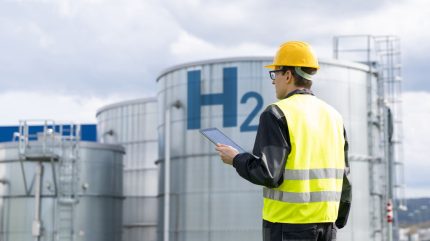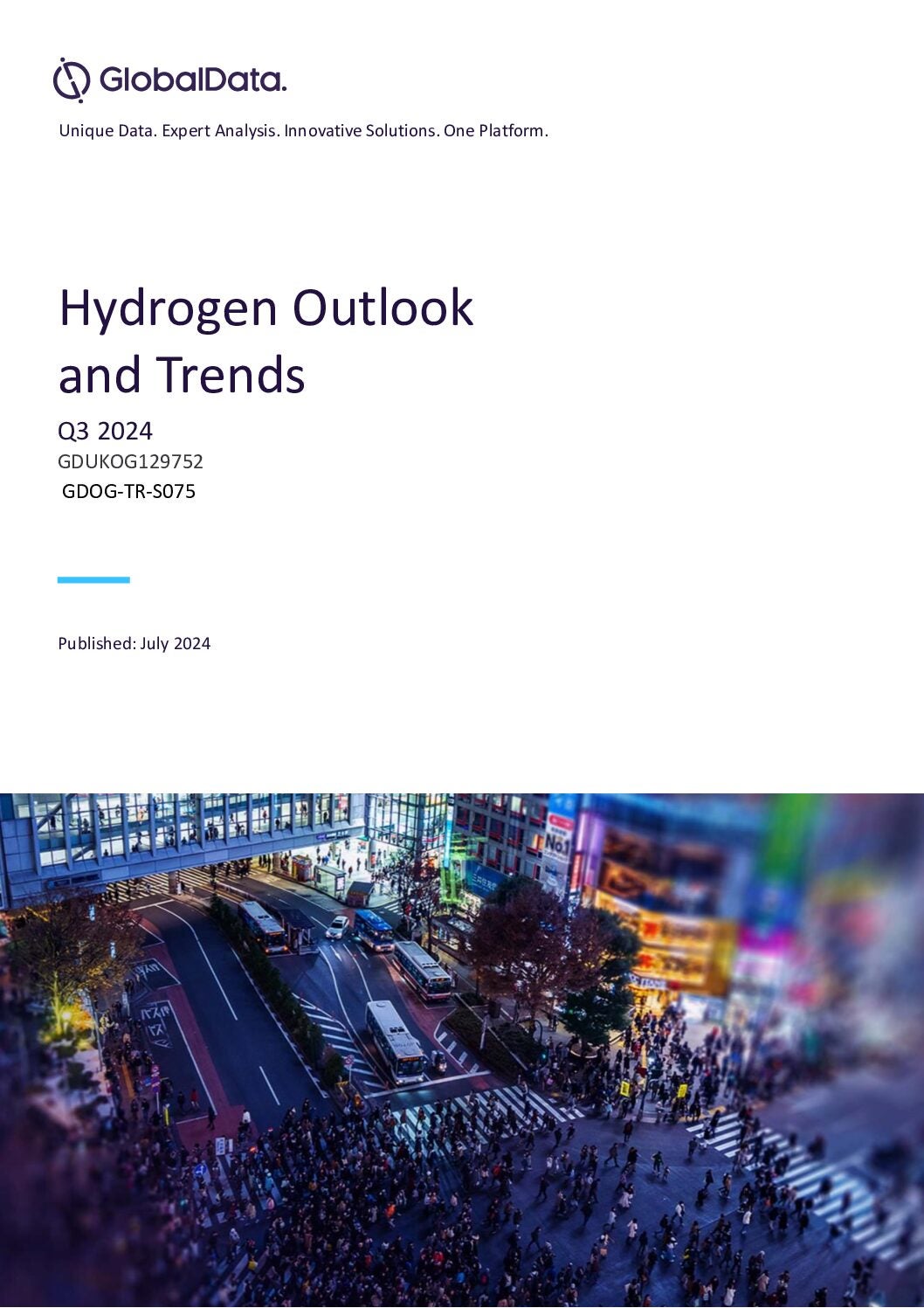
Green hydrogen capacity is forecast to expand substantially with the total of active and pipeline capacity projects amounting to 175 million tonnes per annum, according to GlobalData analysis from October 2024.[1] This growth is predicated on the Levelized Cost of Hydrogen (LCOH) decreasing significantly so that hydrogen produced from renewable energy is competitive with grey hydrogen made from fossil fuels.
According to International Energy Agency (IEA) projections[2], the average LCOH could drop from USD $5 to USD $1.5 per kg by 2030, with certain locations capable of matching grey hydrogen costs with green hydrogen costs as early as 2027. To compete with fossil fuels, the hydrogen cost estimates must be met.
Digital solutions are emerging as an effective tool to manage the efficiency and costs of facilities, supporting green hydrogen in reaching its full potential.
Addressing the high costs of green hydrogen
A major challenge in the green hydrogen sector is the need to rapidly upscale unproven, emerging technology. Relying on subsidies is not a viable long-term option.
“Subsidies and funding will only last so long. To make green hydrogen competitive with fossil fuels, production costs must decrease. However, cutting costs can also reduce production levels, which may threaten the overall financial stability of a hydrogen facility,” explains Fritz Hagen, engineering director for Worley’s Green Hydrogen Center of Excellence in The Hague.
GlobalData estimates that the current cost of producing green hydrogen is four times more than grey hydrogen, and twice as high as blue hydrogen which is produced in a similar way to grey hydrogen but with the addition of carbon capture technologies.
“The challenges customers face during the front-end (CAPEX) phase of projects such as demonstrating the business case, applying for funding and subsidies, studies on technology options, and more often takes precedence and distracts focus from how Operations and Maintenance (O&M) solutions can play a key role in lowering LCOH,” adds Hagen.
Building back-end value for green hydrogen projects
While government-led grants and initiatives remain critical to development of green hydrogen projects, facility operators have options to remove inefficiencies in processes and deploy data analytics to bring down costs.
Worley’s Asset Optimisation Center (AOC) was developed with industry partners (IBM and ABB) to capture proven technology from adjacent industries repurposed for the green Power-to-X (PtX) market.
The AOC is a digital platform that combines real-time data from operations control systems, weather forecasts, and commercially available energy information to generate intelligent insights on how to lower production cost of green hydrogen. The AOC also helps address emerging challenges for green PtX assets, including managing intermittent power supply, achieving green certification, mitigating electrolyser degradation, and operating with limited benchmark data.
“We developed the AOC to adapt operations for the energy transition, using integrated digital solutions that enhance efficiency and reduce operating costs,” explains Hagen. “The energy transition requires flexibility to grow with industry innovation. You don’t want to invest in a solution that is outdated soon after start-up, unable to keep pace with new developments the industry has to offer.”
Hagen highlights that the oil and gas industry is struggling to convert its facilities to the digital age due to a reliance on legacy systems and outdated data. As the green hydrogen market develops from the ground up, it brings a unique opportunity to embed digital solutions at the start of each new project.
The role of data in establishing the green hydrogen industry
The first industrial-scale green hydrogen assets are only now coming online, meaning minimal reference data is available to understand operations, degradation, and intermittent performance. Deploying the right digital solutions is essential to gain insights, reduce operating and maintenance costs, and help lower costs for the next generation of projects.
“Stakeholders across the green hydrogen sector stands to benefit from these learnings, and we need to move fast to reach energy transition targets,” says Hagen. “Encouraging data sharing remains a challenge, but there’s a clear advantage to using and sharing operational information to optimize operations and future designs – especially for government-funded projects.”
Creating useful databases is essential in the nascent world of green hydrogen. Hagen highlights the importance of “sharing information not just within your own organisation, but with the industry as a whole.”
A data platform to optimise green hydrogen production
“Let’s explore some practical challenges facing the green hydrogen industry,” starts Hagen.
Green hydrogen manufacturers must keep rigorous data records to validate their sustainability credentials. Governments are increasingly considering mandatory emissions monitoring and carbon trading schemes, and the green hydrogen sector is no exception.
“Worley’s AOC integrates a certification solution to track the amount of green energy transported to hydrogen facilities and produced by renewable sources,” said Hagen. This creates a central, secure database to verify sustainability profiles. Green certificates can then be published on the AOC blockchain solution for trading or traceability to any PtX end product.
Relying on renewable energy brings fluctuations in power supply and, in cases of dynamic green power-purchase agreements, fluctuations in electricity costs. With these conditions changing rapidly, it is challenging for a human operator to configure the most efficient operating setpoints.
To optimise green hydrogen production at the lowest cost requires specialised solutions to integrate data from various sources and calculate operational setpoints in real-time. The AOC solution incorporates a real-time energy management and modelling solution that enables the facility to operate at the lowest possible energy cost, thus lowering LCOH.
Electrolysis membranes degrade over time, requiring more power – and therefore higher costs – to maintain production levels. Predictive analytics in the AOC monitor equipment performance, supporting decisions on operating priorities and maintenance strategies.
“These are just a few examples of the many ways data integration can drive better decisions and lower LCOH,” Hagen adds. “The AOC is designed to capture the industry’s flexibility as it evolves, helping green hydrogen reach cost competitiveness with grey hydrogen without relying on subsidies.”
References:
[1] https://www.globaldata.com/store/report/hydrogen-energy-transition-quarterly-market-analysis/?utm_source=non-lgp&utm_medium=21-374731&utm_campaign=thematic-report-hyperlink&CampaignValue=701Ti00000PWdMUIA1
[2] https://iea.blob.core.windows.net/assets/deebef5d-0c34-4539-9d0c-10b13d840027/NetZeroby2050-ARoadmapfortheGlobalEnergySector_CORR.pdf



